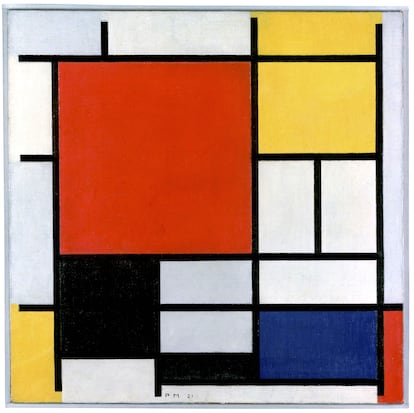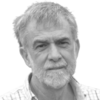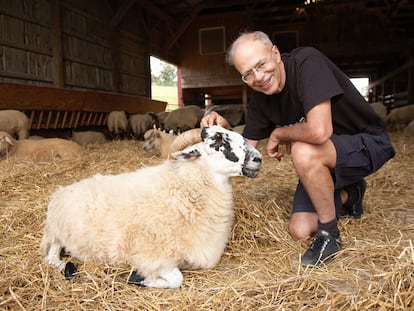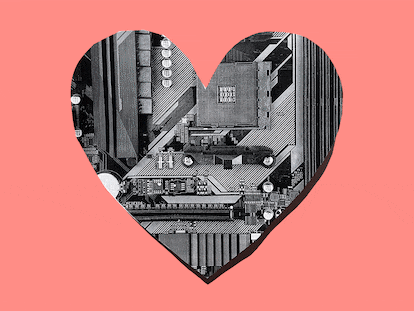How the brain enables consciousness
A neuroscientist and a philosopher made a bet 25 years ago on whether science would by now have solved the mystery of how the brain creates consciousness

It was June 23, 1998. At the annual meeting of the Association for the Scientific Study of Consciousness (ASSC) in New York City, an intriguing bet unfolded. Neuroscientist Christof Koch, back then an assistant professor at the prestigious California Institute of Technology (Caltech), placed a wager with philosopher David Chalmers. Koch predicted that within 25 years — by 2023 — science would solve the enigma of how the brain unlocks consciousness.
I met Christof Koch nine years later, during my sabbatical at Caltech in 2007, when we collaborated on experiments to study the brain mechanisms of consciousness. One notable experiment aimed to understand how consciousness can be blocked out, or how we can “see without seeing.” To achieve this, we used a special optical device that presented different images to the eyes of our subjects. One eye continuously viewed a fixed image, like a face, while the other eye viewed continuously changing images of Mondrian paintings.
During the experiment, the inevitable focus on the fluctuating images presented to one eye prevented the subject from being aware of what they saw with the other. However, their brains unconsciously registered the static image of the face. This was confirmed in a subsequent experiment when that same image of the face performed better than other previously unseen images. The aim was to discover the parts of the brain that enable this, by blocking out conscious experience.
Various experiments around the world using advanced techniques like functional magnetic resonance imaging and computerized electroencephalography have established two main theories on how the brain generates consciousness. One theory, proposed by U.S.-based scientists like Julius Tononi and Koch, suggests that consciousness arises spontaneously from the structural complexity of the posterior parts of the cerebral cortex, which consists of millions of neurons and trillions of connections between them. This implies that if artificial intelligence could create a device with a similar level of complexity, that device would also be conscious.
Another theory postulates that consciousness emerges when particular information is actively distributed to various regions of the brain via a complex network of interconnections. This is known as the global neuronal workspace hypothesis, proposed by Gerald Edelman, Joseph Gally and Bernard Baars. The prefrontal cortex of the brain is identified as the primary causal agent in this theory.
The deadline to settle the notorious bet between Koch and Chalmers has now arrived, but neither one of the prevailing theories has escaped criticism. Simply speaking, they haven’t advanced enough to provide a definitive explanation of consciousness. The theory of functional integration has not shown evidence of the required synchronization between brain areas, and the global neuronal workspace does not always reside solely in the prefrontal cortex. Therefore, philosopher Chalmers has won the bet — science has not yet explained how the brain functions to enable consciousness.
But Koch, a self-proclaimed romantic reductionist, hasn’t given up and is already talking about a new bet with Chalmers. His tenacious personality reflects his German ancestry. I remember a retreat in Santa Barbara, California, featuring Koch as the speaker, and he invariably filled the auditorium, even on weekends. While he may be a science idol, he once traveled all the way to Barcelona just to see a Wagner opera.
Over a decade ago, Christof Koch left Caltech to join the Allen Institute for Brain Science in Seattle, (Washington) where he is president and chief scientist. He remains dedicated to unraveling the mysteries of consciousness. David Chalmers, who currently co-directs the Center for Mind, Brain and Consciousness at New York University, may well agree to another bet, so we might have to meet again in 25 years to see what happens.
Sign up for our weekly newsletter to get more English-language news coverage from EL PAÍS USA Edition
Tu suscripción se está usando en otro dispositivo
¿Quieres añadir otro usuario a tu suscripción?
Si continúas leyendo en este dispositivo, no se podrá leer en el otro.
FlechaTu suscripción se está usando en otro dispositivo y solo puedes acceder a EL PAÍS desde un dispositivo a la vez.
Si quieres compartir tu cuenta, cambia tu suscripción a la modalidad Premium, así podrás añadir otro usuario. Cada uno accederá con su propia cuenta de email, lo que os permitirá personalizar vuestra experiencia en EL PAÍS.
¿Tienes una suscripción de empresa? Accede aquí para contratar más cuentas.
En el caso de no saber quién está usando tu cuenta, te recomendamos cambiar tu contraseña aquí.
Si decides continuar compartiendo tu cuenta, este mensaje se mostrará en tu dispositivo y en el de la otra persona que está usando tu cuenta de forma indefinida, afectando a tu experiencia de lectura. Puedes consultar aquí los términos y condiciones de la suscripción digital.











































